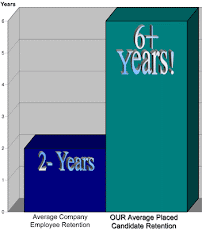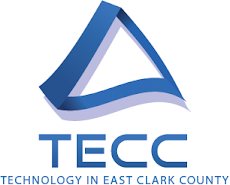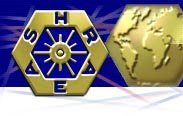In the business world, we are always looking for ways to gain advantage over the competition. For many years organizations thought that bright, intelligent people were the key to superior performance. But “book smarts,” in the form of high IQs or stellar GPAs, we now know, don’t always translate to equally exemplary job performance. The connection is limited at best.
An intelligence quotient (IQ) is a measure of cognitive capacity--one’s ability to think and reason. IQ usually does not change much after the age of 12 to 15. Many non-manual jobs require an above-average IQ; that is, they have “a high IQ threshold.” But hiring people with high IQs is not a guarantee that they will perform well in the position.
The answer to why that is may rest in a conversation that took place between two psychology professors, John Mayer and Peter Salovey, in 1987. Salovey, of Yale University, and Mayer, of the University of New Hampshire, were discussing a particular, bumbling politician and poised the question: How could someone so smart act so inexplicably dumb? They came to the conclusion that good decision-making requires more than intellect or what we normally think of as IQ. Mayer and Salovey soon developed the concept of emotional intelligence (EQ).
Dan Goleman picked up on the theme in his 1995 best-selling book Emotional Intelligence: Why it Can Matter More than IQ. One of the seminal studies of Goleman’s book involved star performers at the prestigious Bell Laboratories near Princeton University. Managers were asked to identify the top performers among the engineers and scientists that worked there. All of the engineers and scientists were presumed to have high IQs to perform their jobs, yet some emerged as outstanding, while others were just average.
Goleman used standard IQ and personality tests on both groups and found no substantial cognitive difference between the stars and the average workers. Based on this study, Goleman wrote in the Harvard Business Review that academic talent was not a good predictor of on-the-job productivity, nor was IQ.
After detailed interviews, the social scientist detected critical differences. The stars had built networks of key people. They used their strong interpersonal skills to create informal teams of competent people who they could rely on when needed. The same interpersonal skills helped them build harmony among their co-workers and managers. Goleman saw this team-building skill as a requisite for superior performance.
Goleman’s research led him to conclude that leaders drive action by building relationships, recognizing their own emotions, responding to the needs of others and by revealing their own mistakes. He termed these traits emotional intelligence (EQ) and defined it generally as the ability to recognize, understand, use and manage emotions in oneself and in others. Unlike cognitive intelligence, emotional intelligence can be taught and learned.
Key traits of emotional intelligence
People with high EQs tend to have five qualities or competencies in common:
- Optimism--ability to anticipate the best possible outcome of events or actions
- Self-Awareness--knowledge of current emotional state, strengths and weaknesses
- Empathy--understanding of others’ points of view and decision-making processes
- Impulse Control--ability to mitigate an urge to act (as in: think first and act later)
- Reality Testing--ability to see things as they are, not as we want them to be
The more of the qualities and person possesses, and the more they use them, the higher EQ they typically have.
Moodiness and leadership
Do moody leaders make better leaders? The answer is: it depends on the prevailing mood. Is the leader optimistic and happy, or pessimistic and depressed? Few people will give their full support to a gloomy, cynical leader, at least for very long. Their negative nature, not to mention lack of positive feedback, leads to high workplace turnover and may even cause some malcontents to sabotage an organization in revenge.
Happiness—and the attractive aura it produces—is both an emotion and a mood enhancer. The latest research indicates that happy people enjoy life more and live longer than unhappy people. No surprise, since content people focus on the positive and surround themselves with like people – not to mention they are more willing to embrace change. The “mantle of happiness” is thought to influence people simply because happiness attracts attention. Now we also know something else: Happiness has an observable, positive impact on productivity.
This might all sound obvious, and yet how often do executives hire or promote managers who fail to connect with or motivate their employers?
I spent 27 years hiring managers, who, in turn, hired sales and administrative people. My own observation indicates that a little dissatisfaction or unhappiness with the past and/or the current state is often a good thing. Managers and leaders who are always happy with the current situation are not too motivated to change it. Many successful entrepreneurs and leaders are happy but dissatisfied with the current state. The dissatisfaction drives them to create change or make something better.
Another mood that impacts results is optimism--the view of the world as a positive place and the future as bright and achievable. An optimistic mood is almost a necessary quality among leaders, as it imbues their language with hope and possibility for desired outcomes.
Differentiating between the true optimist and pessimist is easy, according to Joshua Freedman, author of The Art of Leadership: How to Get Results with Emotional Intelligence. Freedman claims the optimist looks at an unsettling state as temporary, isolated and changeable while the pessimist views it as permanent, pervasive and immutable. Optimists see the possibility of change and pessimists see the chains of the present.
The moods of a leader are important because moods are contagious and move swiftly from person to person. A leaders’ predominate mood often becomes the mood of the organization, which can determine long-term success or failure.
Optimism, anxiety, depression and confidence are long-lasting states of being that endure great time spans. Emotions tend to be shorter lived and triggered by events. However, our mood often determines our emotional response to an event. When we encounter an event that requires emotional skills, our ability is either diminished or enhanced by our mood.
Benchmarking and testing for EQ
The difference between a manager and a leader is typically 90 percent EQ skills. Managers are often appointed to their positions not because of their management skills but because of their knowledge and experience. Some mangers go on to become great leaders, while others become only good managers–and some don’t even do that.
To use EQ as a hiring tool, many companies benchmark a position’s top and bottom performers for emotional intelligence. The benchmarking process identifies traits that are present in top performers and absent in the bottom rank. Companies can then test potential candidates for those traits or EQ competencies required by the job.
Two tests are available that effectively measure a person’s EQ. The MSCEIT, developed by Mayer, Salovey and David Caruso, was the first EQ test. A more updated test was
developed by Rueven Bar-On, a psychologist who coined the term “emotional quotient.” The Bar-On model (more widely used and validated than the MSCEIT) tests in five general areas:
- Intra-Personal – ability to be aware of, manage, and express emotions
- Inter-Personal – ability to initiate and maintain relationships with others
- Adaptability – ability to be flexible, solve problems and be realistic
- Stress Management – ability to tolerate stress and control impulses
- General Mood – happiness and optimism levels
I like to approach the identification of EQ competencies essential to a job from both external and internal viewpoints. The external approach requires a carefully crafted, facilitated session where five to seven people in an organization are tapped for their insight into the EQ competencies they believe are needed for superior job performance in a particular position. The internal approach involves assessing superior performers currently on the job to see what competencies dominate. Ideally, an organization should do both and combine the results, but often the job is new and has no incumbent to assess. In that case, an organization can rely on the external results alone.
The above approach allows for both applicants and incumbents to be assessed and matched against benchmarks. The goal is to give a clear, quantifiable picture of what drives performance in a particular job, and also to identify opportunities to leverage strengths and manage around individual weaknesses.
Most organizations want, but do not have, superior performers. By learning more about EQ, mapping job candidates to benchmarks and creating a more intentional hiring process your organization can happily be an exception.
Stephen Blakesley is Managing Partner of GMS Talent L P, in Houston TX. He is the author of Strategic Hiring: Tomorrow’s Benefits Today, and a contributing author to Pfeiffer Annual Consulting Yearbook.














No comments:
Post a Comment